ROAST REVOLUTION

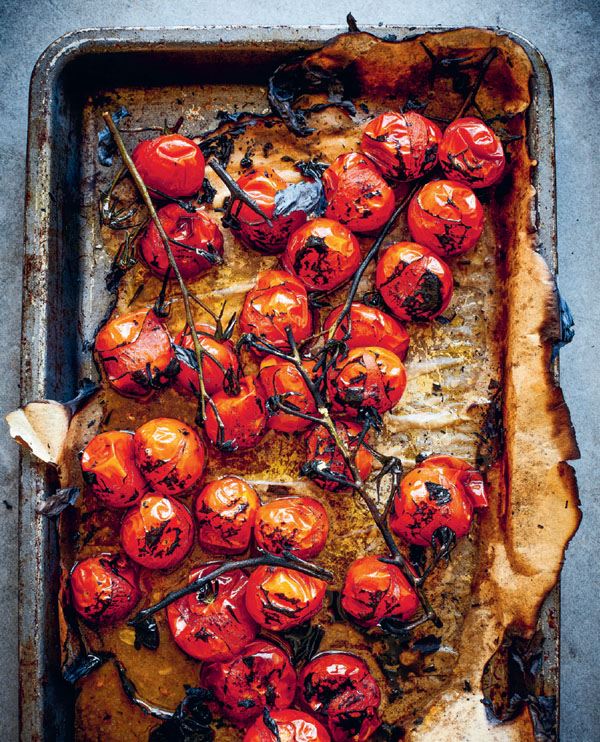
ROAST REVOLUTION
CONTEMPORARY RECIPES FOR
REVAMPED ROAST DINNERS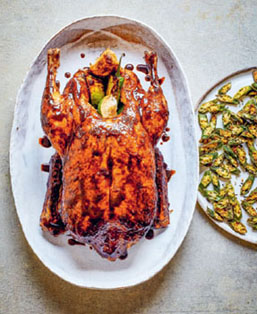
KATHY KORDALIS photography by Mowie Kay


CONTENTS

INTRODUCTION Roasting is one of the oldest cooking methods, and one which remains popular for a number of reasons. A hot oven alone can bring out the deep, robust flavours of almost any ingredient, rendering it perfectly crisp or tender. Its spacious proportions mean that it lends itself well to creating plentiful meals for sharing just as well as smaller meals for one or two. It is truly one of the easiest, yet most impressive ways to cook. So why the need for a roast revolution? With a kitchen technique that is so traditional, it is easy to get stuck in a rut. In this book, I aim to shake up your roasting repertoire and show you how to incorporate ingredients and flavours from around the world, create healthier, lighter roasts, whip up quick mid-week roasts and create show-stopping indulgent dishes that will wow your family and friends.
An important part of the roast revolution is the realization that meat, fish and vegetables can all be equally worthy of star-ingredient status. As roasted meat is rich in protein, minerals and vitamins, it was traditionally considered a feasting meal and eaten more seldomly than it is today. Increasingly, people are returning to eating less meat or not at all, and to consider the provenance and welfare of animals. I love a roasted vegetable centrepiece, and can show you that vegetables are anything but boring when you manage to cook them just right. Many people have trouble judging what makes the difference between soft, caramelized glory and plain mush the recipes in this book and tips in the following pages will help you master the technique. Whatever your central ingredient happens to be, the important thing is to start with the best quality piece of meat, fresh fish or vibrant bunch of vegetables you can find it will make the end result infinitely more delicious.
Particularly if you are looking for something special, speak to your butcher, fishmonger or greengrocer about what will be best on the day. If you are cooking meat, something on the bone looks impressive and makes for a succulent meal. The best part about roasting, for me, is the flexibility and versatility it allows. Throughout this book, there are ample opportunities to mix and match mains with sides and challenge conventional ideas of what makes a good roast. Get started with the selection of classic recipes, which combine simplicity with small, fresh twists try Roast Beef with Beetroot, Blood Orange & Horseradish Salad & Cumin Pumpkin Whip. Fast-cook dishes make use of the quickly transformative power of a hot oven with recipes such as Gochujang Roasted Aubergine Steaks and Soy & Sesame Baked Monkish.
Slowroasting is an easy and satisfying way to cook, sample the Sticky Plum-roasted Cabbages or Stuffed Porchetta. If you are looking for spectacular celebration dishes, there are plenty, try Truffle-roasted Cockerel with Hasselback Squash, Carrots & Kale with a Sausage & Freekeh Crumb. Crowd-pleasing Rum Ribs with Twice-baked Stuffed Potatoes or Salt-crusted Sea Bass are ideal for weekend dining. Finally, take your pick from the selection of sides, desserts and cocktail recipes to beautifully finish off your feast. Use the menu suggestions at the back of the book to help you create unique combinations perfectly suited to you. 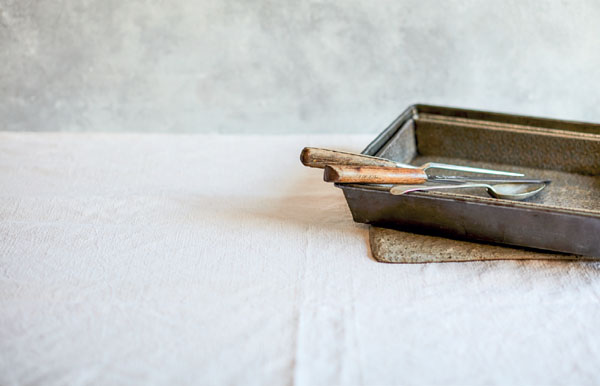 HOW TO ROAST MEAT & HEAT Roasting is an excellent cooking technique for a wide variety of meats and fish.
HOW TO ROAST MEAT & HEAT Roasting is an excellent cooking technique for a wide variety of meats and fish.
It is especially suited to poultry and leaner cuts of lamb, pork and beef. More fatty or sinewy cuts of meat need a little extra time, but fabulous results can still be achieved. Meat is primarily a muscle, and different muscles do different things in the body. Muscles that work more in the animal will be tougher than those that are used less. Parts of the animal that tend to work the most are the shoulder, neck, and legs, hence these can often be tougher cuts of meat. The parts of the animal that work less are found in the back and especially towards and including the small of the back.
The muscles that work less are more tender and suited for dry-cooking quickly in a very hot oven. Tougher cuts of meat require some sort of liquid, like the braising liquid in a pot roast, or low, slow cooking, which tenderizes tough muscles. ON OR OFF THE BONE? There are different advantages to buying meat both on and off the bone. Boneless joints are easy to carve but wont always have the flavour which comes from the juices released from the bone marrow. However, you can always ask your butcher for some bones to roast your meat on top of. You can also ask your butcher for your joint of meat to be chined they will cut the bone from the meat but leave it on the joint.
CUTS OF MEAT BEEF Beef comes in many different cuts, so once you have identified the cut, you can work out the cooking method to get the most out of it. The general rule is, if it is lean, cook it fast, and if it is fibrous, cook it slow. Rib of beef This is a lovely thick, rich, on-the-bone cut, perfect for roasting. It tends to have a lot of flavour and always looks impressive to serve, though can be more difficult to carve. Fillet of beef/tenderloin If you are looking for the ultimate in luxury, this is a boneless joint with a fantastic flavour. It is the centre cut of the fillet on the back of the cow which does very little work and is therefore very lean, with little fat and fibres.
It is best cooked rare and served in thin slices. Brisket This is a flat piece of muscle on the underside of the animal. Great for braising, this muscle does a lot of work and requires long, slow cooking to tenderize it. LAMB Joints of lamb can be prepared to be cooked on or off the bone. With a few exceptions, it is usually preferable to cook joints of lamb on the bone to keep the meat moist and to infuse more flavour. Leg of lamb Most commonly cooked on the bone, this generous cut is probably the archetypal family lamb roast.
You can also buy legs of lamb boned or partially boned, which are easier to carve. Rack of lamb The rack of lamb is a bone-in joint cut from the rib section. It is often French-trimmed to remove excess fat and clean along the top, making it an impressive looking joint. The rack of lamb doesnt take very long to roast and yields tender, juicy meat. Shoulder of lamb Most often served deboned and rolled, this more humble cut is usually deemed less tender, so is better suited to slow cooking. 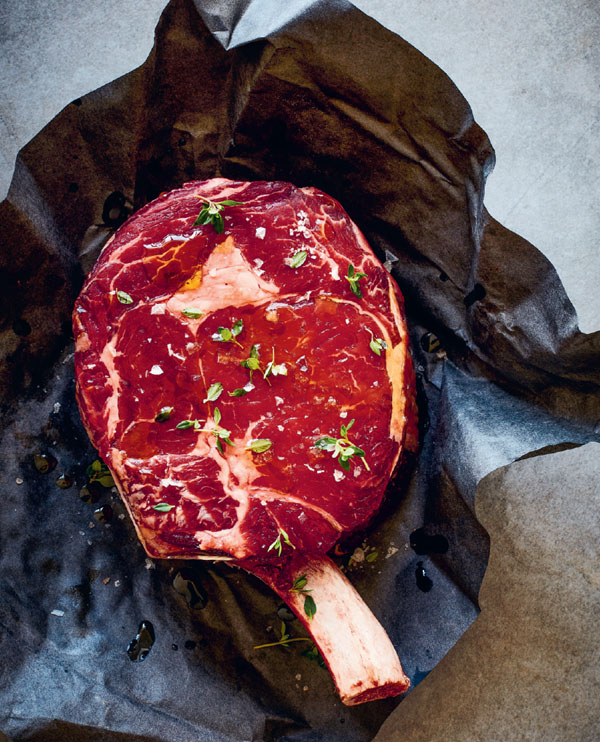


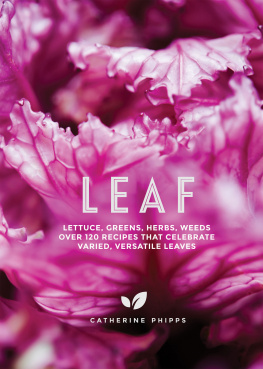

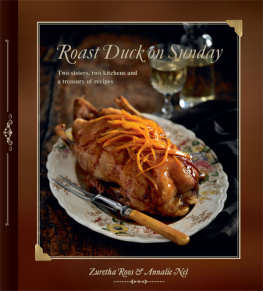




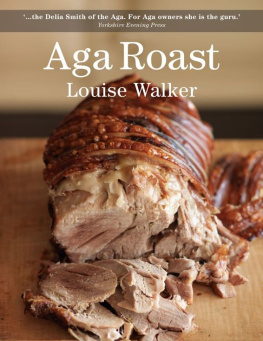


 ROAST REVOLUTION CONTEMPORARY RECIPES FOR
ROAST REVOLUTION CONTEMPORARY RECIPES FOR KATHY KORDALIS photography by Mowie Kay
KATHY KORDALIS photography by Mowie Kay 
 CONTENTS
CONTENTS  INTRODUCTION Roasting is one of the oldest cooking methods, and one which remains popular for a number of reasons. A hot oven alone can bring out the deep, robust flavours of almost any ingredient, rendering it perfectly crisp or tender. Its spacious proportions mean that it lends itself well to creating plentiful meals for sharing just as well as smaller meals for one or two. It is truly one of the easiest, yet most impressive ways to cook. So why the need for a roast revolution? With a kitchen technique that is so traditional, it is easy to get stuck in a rut. In this book, I aim to shake up your roasting repertoire and show you how to incorporate ingredients and flavours from around the world, create healthier, lighter roasts, whip up quick mid-week roasts and create show-stopping indulgent dishes that will wow your family and friends.
INTRODUCTION Roasting is one of the oldest cooking methods, and one which remains popular for a number of reasons. A hot oven alone can bring out the deep, robust flavours of almost any ingredient, rendering it perfectly crisp or tender. Its spacious proportions mean that it lends itself well to creating plentiful meals for sharing just as well as smaller meals for one or two. It is truly one of the easiest, yet most impressive ways to cook. So why the need for a roast revolution? With a kitchen technique that is so traditional, it is easy to get stuck in a rut. In this book, I aim to shake up your roasting repertoire and show you how to incorporate ingredients and flavours from around the world, create healthier, lighter roasts, whip up quick mid-week roasts and create show-stopping indulgent dishes that will wow your family and friends.  HOW TO ROAST MEAT & HEAT Roasting is an excellent cooking technique for a wide variety of meats and fish.
HOW TO ROAST MEAT & HEAT Roasting is an excellent cooking technique for a wide variety of meats and fish.